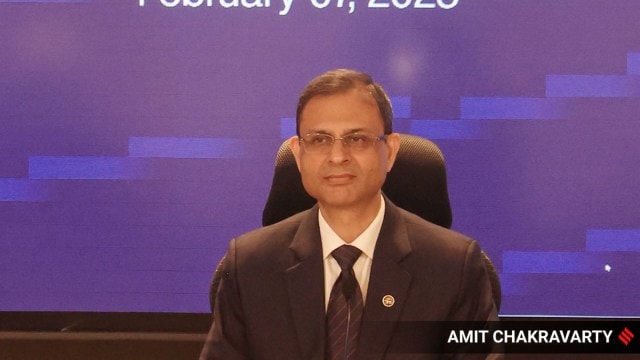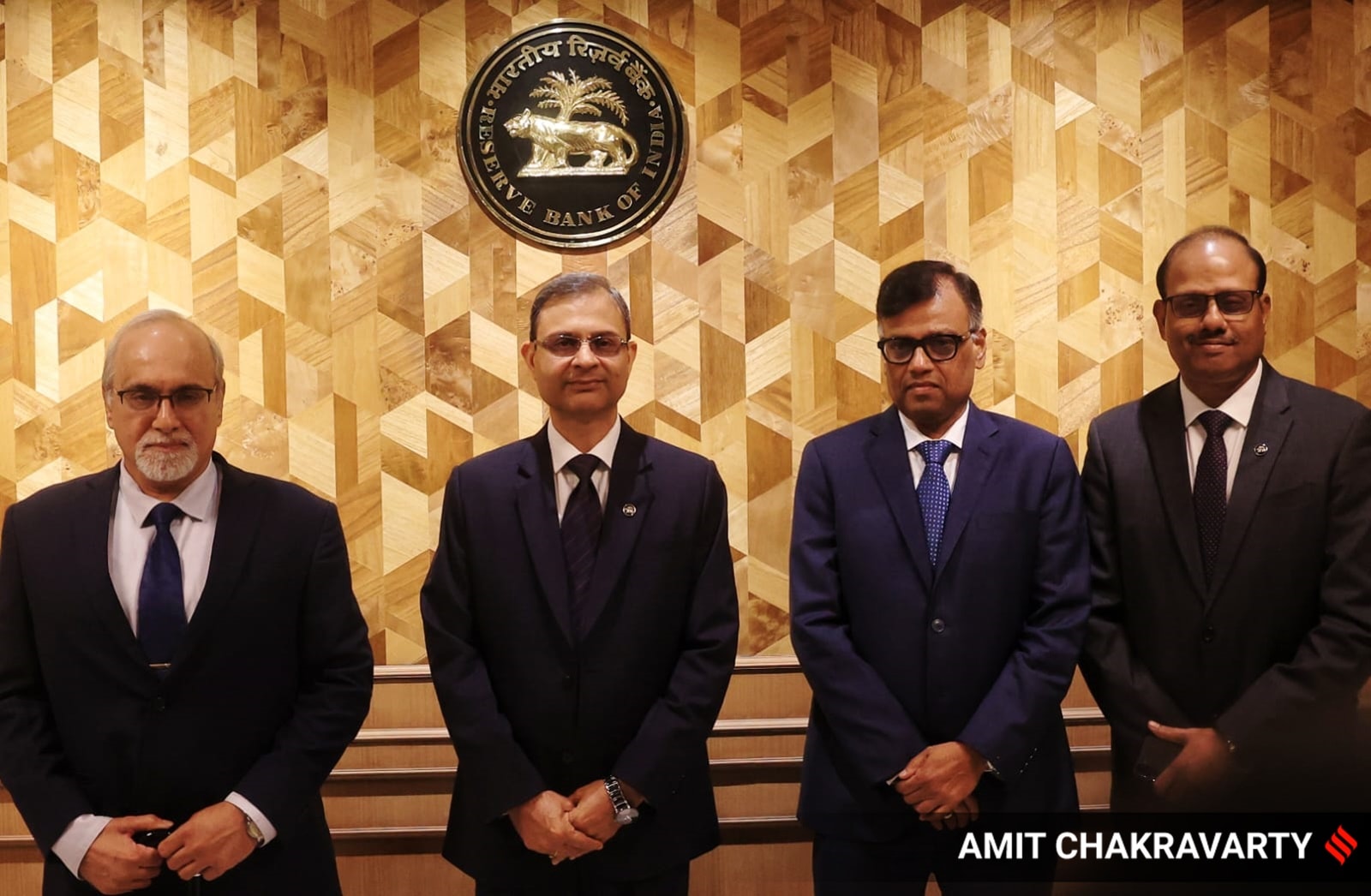Less restrictive policy and no explicit exchange rate targeting – takeaways from RBI Governor Sanjay Malhotra’s first monetary policy
Though the RBI cut the Repo rate, the markets were not very enthused as the reduction was on the expected lines and they were hoping for a change in the stance from neutral with more liquidity infusion.
 RBI Governor Sanjay Malhotra addresses the media after the monetary policy committee meeting on Friday. (Express Photo: Amit Chakravarty)
RBI Governor Sanjay Malhotra addresses the media after the monetary policy committee meeting on Friday. (Express Photo: Amit Chakravarty)Reserve Bank Governor Sanjay Malhotra made some interesting observations, which are indirect in nature but there are clear signals to the banking sector and other market participants about the rupee, liquidity management and monetary policy changes on the cards.
Banks told to lend in call money market
Malhotra said that some banks are reluctant to on lend in the uncollateralised call money market. Instead, they are passively parking funds with the Reserve Bank. He asked the banks to actively trade among themselves in the uncollateralised call money market to make it deeper and vibrant for better signal extraction from the weighted average call money rate (WACR). This could be aimed at facilitating the orderly functioning of the market by avoiding any liquidity shortfall.
While the market was expecting more liquidity infusion through various means, it has not happened.
It’s apparent that he wants many banks which are flush with funds to lend it in the call money market to take care of the liquidity shortage in the system. This is at a time when the RBI intervened in the forex market to sell dollars in a bid to prevent a major slide in the rupee. Foreign investors were taking out money from the Indian market. The drainage of liquidity is mainly attributed to advance tax payments in December 2024, capital outflows, forex operations and a significant pickup in currency in circulation in January this year, he said.
Currency in circulation has risen by Rs 1.80 lakh crore, or 5.3 per cent, to Rs 35.99 lakh crore as of January 2025
 RBI Governor Sanjay Malhotra with members of the Monetary Policy Committee. (Express Photo: Amit Chakravarty)
RBI Governor Sanjay Malhotra with members of the Monetary Policy Committee. (Express Photo: Amit Chakravarty)
Rupee intervention to avoid excessive volatility
Governor said the RBI’s interventions in the forex market focus on smoothening excessive and disruptive volatility rather than targeting any specific exchange rate level or band. While he says the exchange rate of the Indian rupee is determined by market forces, he might be favouring some depreciation in the rupee – a clear change in the stance as during the time of the previous Governor, there were clear efforts to keep the rupee from depreciating sharply.
The Indian rupee (INR) depreciated by 3.2 per cent against the US dollar since November 6, 2024, the day the presidential election results were announced in the US, largely mirroring the 2.4 per cent appreciation in the dollar index during the same period. The RBI has used the forex kitty to prevent a crash in the rupee. At the same time, he’s hinting that the RBI may not be averse to the idea of a steady depreciation in the rupee in line with other currencies.
The Indian economy, though continuing to remain strong and resilient, also did not remain immune to these global headwinds, with the Indian Rupee coming under depreciation pressure in the recent months. Malhotra said the RBI has been employing all tools at the RBI’s disposal to face the multi-pronged challenges.
Less restrictive policy on the anvil?
Malhotra also hinted the Monetary Policy Committee (MPC), while continuing with the neutral stance, felt that a less restrictive monetary policy is more appropriate at the current juncture. This could be an indication that the MPC might change the stance from neutral if the inflation-growth dynamics turns favourable in the forthcoming policies.
There are expectations of two more rate cuts in the calendar year 2025 if inflation moves in the projected trajectory. It’s clear that the new governor wants growth also picks up and he said “we should aspire for 7 per cent growth”.
He says the MPC will take a decision in each of its future meetings based on a fresh assessment of the macroeconomic outlook. The RBI is committed to conduct monetary policy and take such measures, as appropriate, which are timely, carefully calibrated and clearly communicated, to facilitate conducive macroeconomic conditions that reinforce price stability, sustained economic growth and financial stability, he said.
Markets not very enthused
Though the RBI cut the Repo rate, the markets were not very enthused as the reduction was on the expected lines and they were hoping for a change in the stance from neutral with more liquidity infusion. The benchmark Sensex fell by 198 points, or 0.25 per cent, to 77,860.19 and NSE Nifty lost 43 points, or 0.18 per cent, at 23,559.95. Bank shares languished with the BSE Bankex declining by 0.49 per cent.
The initial reaction of bond markets has been one of disappointment, with yields inching up a few basis points. The benchmark 10-year bond yield was at 6.70 per cent. Interest rates are expected to soften over the next few months. The rupee gained 15 paise at 87.43 against the dollar.
- 01
- 02
- 03
- 04
- 05































